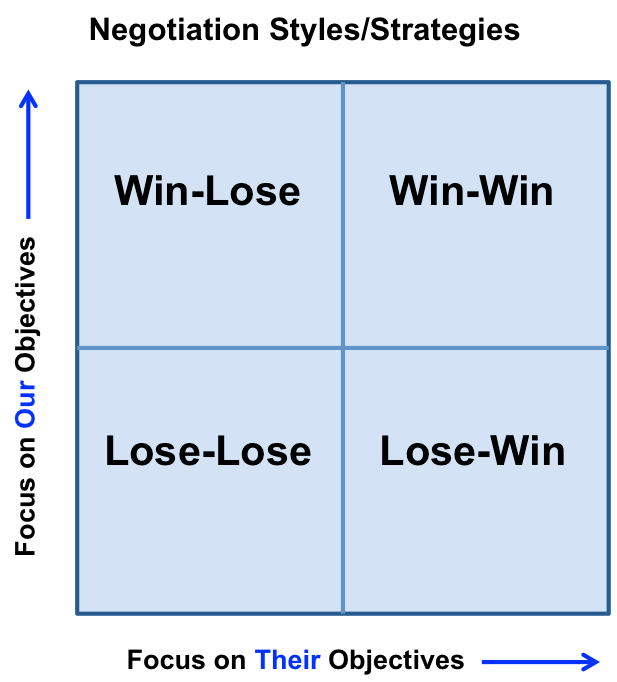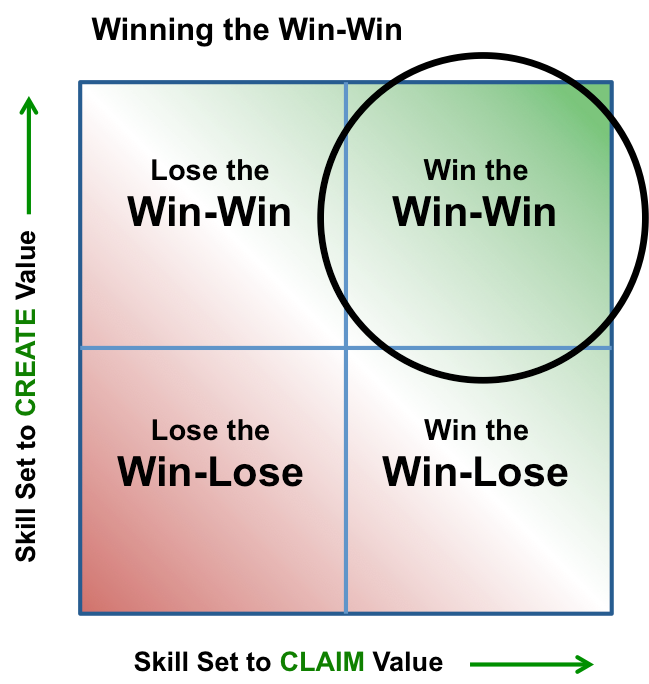Creating a Win-Win strategy during a negotiation

While attending BIO-Europe Spring® in Vienna, join Sean’s Negotiation Masterclass March 23–24, 2019, at the Vienna Courtyard by Marriott. During this course, you will explore how to negotiate strategically and effectively to build and preserve relationships and get effective and sustainable outcomes in a challenging marketplace.
Are you a Win-Win or Win-Lose negotiator? We tend to answer this with Win-Win, of course, because we’re always being told that we must create value in the negotiation strategy.
Well, you’re not alone thinking that. It’s what most business executives tell me they strive for. However, when these same executives take part in negotiation simulations, they invariably talk Win-Win, but walk Win-Lose. Why is that? Whether in simulations or in real life, i.e., selling services, agreeing mergers etc., it happens to most of us.
Before trying to answer, “what is winning the Win-Win?”, let us dive into what those concepts actually mean. The first, and most important, a win is always our win. In fact, this is the only reason we negotiate—focusing on achieving our overall business objectives.
Looking at the Strategy Matrix, you will notice the varying negotiation styles.
What is a Lose-Win?
You may be thinking “who would negotiate to lose?” Lose-Win is often the result of lacking the courage to drive for your own objectives and giving in to the other party’s wants. On occasion, playing a short-term Lose can be used constructively as part of a long-term strategy.
What is a Lose-Lose?
Usually, Lose-Lose scenarios comes from focusing on the wrong objectives or from broken relationships (think of a typical divorce, but I’m sure you can think of plenty of business examples too).
What is a Win-Lose?
Returning to the Win side of the matrix, once we have defined and can focus on our business objectives, we can set the strategy. With Win-Lose, the strategy is simply to meet your objectives at the expense of the other party’s objectives. We consequently compete with our “opponent” for the biggest share of the existing value.
What is a Win-Win?
On the other hand, with Win-Win, we meet our objectives by helping the other party achieve their objectives, or collaborating with our “partner” to optimize value creation.
So, which of the two is the best strategy?
The answer, of course, could be that it depends. It depends on many things, but in short, it depends whether there is actually value to be created. If there isn’t, then go for Win-Lose.
So, with Win-Lose, you are looking to claim as much of the existing value as possible. To do this, negotiators will need to have developed the following skill sets:
-uncover their walkaway price—research, questioning, listening, reading body language and concession analysis
-hide your own walkaway—identify weaknesses, prepare answers, manage body language and manage movement
-manage emotions—make them like you and neutralize your own emotions
-drive for the best price—aim high, use threats, resist concessions and effective anchoring
Other the other hand, if there is value to be created, go instead for Win-Win.
Creating value occurs when two parties can gain from linked exchanges (of products, services, rights, etc.). Win-Win negotiation is about optimizing this value creation.
Win-Win value can actually be measured. After an agreement has been reached, an independent party can calculate how much value has been created (the value of the variables to each party). The consultant can go on to re-engineer the agreement by introducing new variables to further optimize the positions for both parties. These parties can then each calculate their net bottom line benefit.
How to cultivate value
To create this value themselves, the two parties need to have developed the following skills:
-goal setting—to understand the ways the negotiation can contribute to success
-identifying variables—to be included in the agreement to achieve the business goals
-building trust/rapport—to create an environment where the two parties can work together effectively
-questioning/listening—to understand the other party’s needs
-information sharing—to enable the other party to understand your needs
-open-mindedness—to be receptive to left-field opportunities
-solution finding—to convert ideas into workable agreements
Win-Win negotiation strategy says nothing about how this extra value will be shared between the two parties. Fairness would obviously be one solution. But what is fair? And even if you knew, would you want to give away more than you had to? And how confident are you that your negotiation partner would be equally generous?
So, we come to the point (and well done for staying with me) where we can finally answer the question, “How do we win the Win-Win?”.
Well, that’s quite simple to answer. Simultaneously apply both skill sets, those that create value and those that claim it.
Winning the Win-Win is the ultimate negotiation strategy. In fact, ultimate is probably the wrong word. It is the only negotiation strategy. I’ve never seen a negotiation where value couldn’t be added. And never met a negotiator who didn’t want to meet/exceed their business objectives.
I assume you too want to meet/exceed your business objectives. So, go develop and apply your negotiation skill sets. And don’t forget to have fun doing it.
© Sean Sidney 2019
 Sean Sidney has a strong procurement and negotiation background, with senior global roles in complex multinational environments.
Sean Sidney has a strong procurement and negotiation background, with senior global roles in complex multinational environments.
Sean is now an internationally renowned negotiation trainer, consultant and keynote speaker with over ten years’ experience. He has supported many of the world’s leading companies, from a wide variety of business sectors. He runs both public programs and in-company courses internationally, with extensive experience working in continental Europe, Asia and the Americas.
Sean creates a fun interactive environment, where the training room comes to life with discussions, activities, role-plays and coaching. As people learn from doing and from making mistakes, Sean ensures the participants leave the course practiced and confident, able to convert their new skills into business gains.



